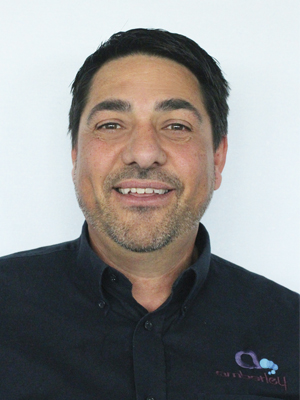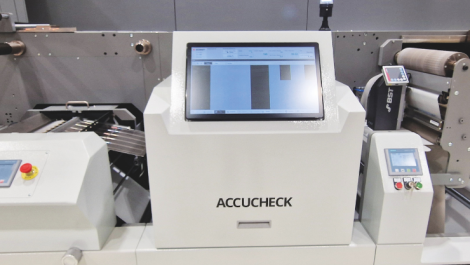St Pancras Chambers Collection of scented candles
Interview with Trevor Smith, managing director of Amberley Adhesive Labels. By Des King.
Since investing in his first digital press in 2003, Amberley Adhesives’ managing director Trevor Smith has steered his company into being a regular fixture onto the annual short-list for pretty much every industry award regularly bestowed to recognise quality and innovation in label printing. Not bad going for someone who professes not to have actually been a printer when he first acquired the Dorset-based business.
Fourteen years later, and now onto his sixth different press – all of which have been supplied by HP – digital print accounts for over 70% of Amberley’s £6.4 million turnover. It’s a matter of pride to Trevor Smith and his team that a large proportion of his enviably loyal customer base has been with the company ever since their digital journey first started.
En route, of course, was the pivotal role played as the sole UK member of the Europe-wide group of HP print companies assembled to deliver the ‘Share a Coke’ customised labelling campaign in 2013.

Trevor Smith
When and why did you extend into digital print?
Prior to when we took over the company in 2002, the previous owner had been looking at combination presses. However, one of my partners in the MBO, Richard Geller, and myself were both from a repro background and had been through the digital revolution with Macs and electronic make-up etc. Also we were very conscious that despite assuring customers that Cromalins and match prints were WYSIWYG that was never quite the case. We saw that HP’s digital solution could tick a lot of the right boxes for us so we took the plunge; partly because we needed to update our capacity, partly because we wanted to add to our capabilities as a business.
What were the main challenges you had to address?
We didn’t know anyone else who was printing digitally, so it was really a matter of breaking new ground. But whilst the market was still growing, the rate was starting to slow so we just knew that somewhere along the line it had to be better than going the conventional route. A lot of this was a matter of developing the right mind-set, but basically we had to learn on the job. The ws4000 press we started out with was the first to be installed in the UK. The training support was nowhere near as sophisticated as it is today; we were more or less guinea pigs for that. We tasked two of our existing letterpress operators to run it; one of them took to it straightaway and is still one of our best operators.
Our repro skills helped us considerably; HP as well, since Richard Geller did a lot of the work with them on the green and orange, which were beta-tested here prior to being rolled out to the market. That collaboration between HP and its early adopters was very important.
And what have been the main gains?
All that a rotary silk screen or rotary foil combination press would have done would have been to enable us to provide exactly the same as the competition. So, what would have been the obvious customer response: OK fine, but can you do it any cheaper? Adopting digital slipped us past that stage and put us a step ahead, although it took a long time to build customer awareness to what it could do for them.
It’s put Amberley in the front rank of label manufacturers, it’s almost doubled turnover, and could do again; there’s a healthy investment policy. We’ve also been able to attract and retain a younger workforce knowing that we are at the leading edge of technology.
How has customer awareness to digital developed over the years?
We were always a short-run label company supplying lots of versions, especially so in the personal care and cosmetics and toiletries sectors, where Estée Lauder was, and still is, one of our largest customers. Digital redefines what’s meant by cost so that was quite an easy conversation to have with customers, although we still had to convince them on print quality – that was something they were initially nervous about.
But are people really that interested in how a thing’s made; it’s what it does that actually matters. A lot of the buyers back then saw themselves as print experts; there were some jobs we simply weren’t allowed to tender on because we didn’t have, say, a Gallus press. That has changed a lot. Nowadays, the customer is massively reliant upon their suppliers for knowledge and expertise.
And how has digital helped you and them to develop your businesses?
We have won new business over the years because of our digital capability; it is the primary driver for growth. We can offer huge savings to the customer in terms of plate costs, storage, etc, and our pricing is far simpler because the press runs at one speed depending on the number of colours you put into it. We love the click charge system because you’re not guessing at how much ink you’re using.
Whilst digital enables us to send an exact match of what customers want, it also allows them to make late tweaks very cost-effectively. Initially, we saw that as a negative but in fact it massively facilitates optimal customer engagement. We have at least one customer on site in any given week. It was a massive benefit that we didn’t understand and so never knew it would be good to have.
There’s no doubt that ‘Share a Coke’ has really helped to build awareness to what digital can do. However, a lot of brands – particularly some of the larger ones – still haven’t fully switched onto the fact that their traditional marketing routes are not giving them the revenue and return that they need, and indeed are reducing. These guys are paying for packaging already; they have to. They just now need to switch a little bit of that focus and spend to the packaging and they’ve got a ready-made marketing tool there. That’s how and where digital will grow in the future when people wake up to what it can achieve.
Looking back is there anything you wish you’d done differently?
I wouldn’t have told so many of our competitors about the benefits! When you go digital, it’s not just about the press. We should definitely have invested more in workflow and also specialist data skills; that would have made us a lower-cost business far sooner. Indeed, we still don’t fully appreciate the value of the data that we hold in this business.
If I were starting my label business from scratch today I would not have an analogue press; it brings so much baggage with it. Yes, there are certain areas of the market that even now you couldn’t begin to address, such as longer-run labels for sandwiches for instance. I don’t know that market particularly well, but I don’t hear anyone telling me that it generates massive margins.
What advice would you give to anyone adopting digital now?
There are so many systems, so many vendors that I would say just be sure they’re going to be around in four or five years time because they need deep, deep pockets. They might look like a big company to you but probably aren’t compared with say HP or some of the other major players. In fact, if you can find a vendor that seems better for your business than HP then go for them. I’m not saying they don’t exist, but you certainly won’t find too many. HP know what they’re doing, and they drive you to do the same. Because the business runs on clicks, they genuinely want you to print more.
Certainly look at the service support and the training that’s available, and see whether that’s adequate. Lastly, don’t hang around. People often say wait for the next big thing – it’ll be faster, it’ll do this it’ll do that – but I’d say if it’s right for your business then invest now.
How do you see the future for digital print for packaging?
The customer doesn’t want a printed label; the customer wants a decorated product. As of now they have to use a label. Fast-forward 20, 30, 40 years and it’ll be direct-to-product printing, won’t it? People will say, ‘Do you remember those sticky things they used to have back in the day?!’
Because we had plenty of capacity with two Indigos we did look at inkjet last year, since at that time we reasoned that bringing in a third Indigo wasn’t going to give us anything we can sell. Although we liked the Screen solution and OK it’s a bit faster, we didn’t really see that killer benefit. Meanwhile, I’m not even going to think about Landa until something
turns up.
Our next investment will be in some sort of embellishment kit. We like the Scodix system, but that’s not rotary. HP is doing its own thing and one of the trials we’ve got going on here could well lead to something.
Read the full November/December issue of Digital Labels & Packaging here. Subscribe to the magazine for free – register your details here.






